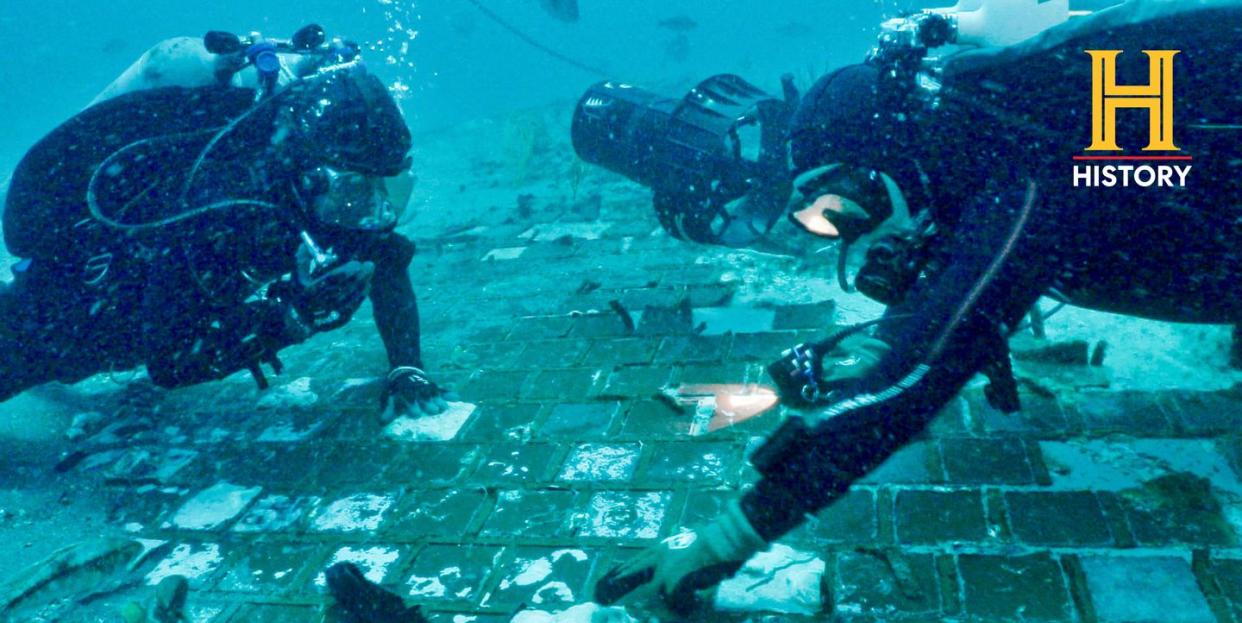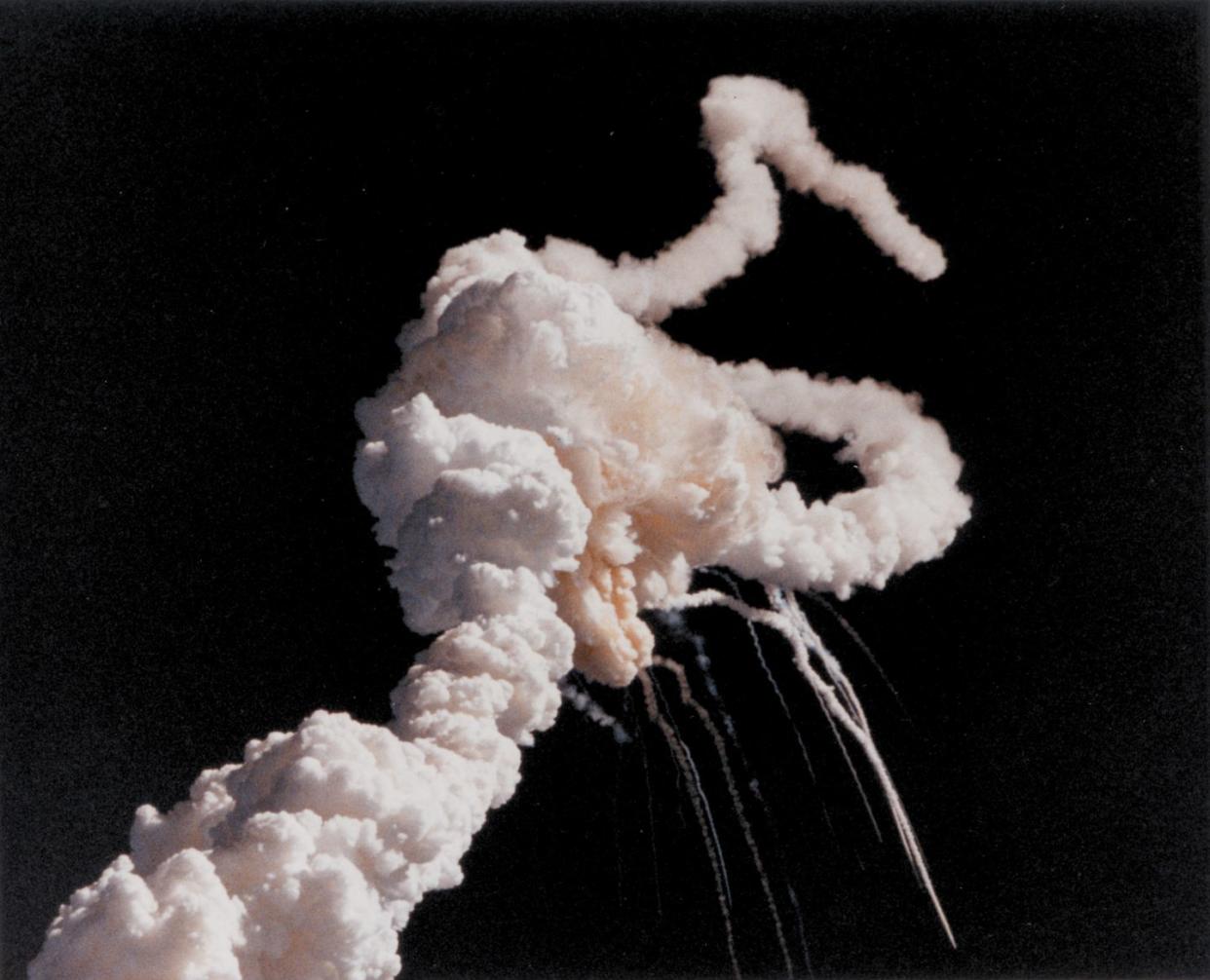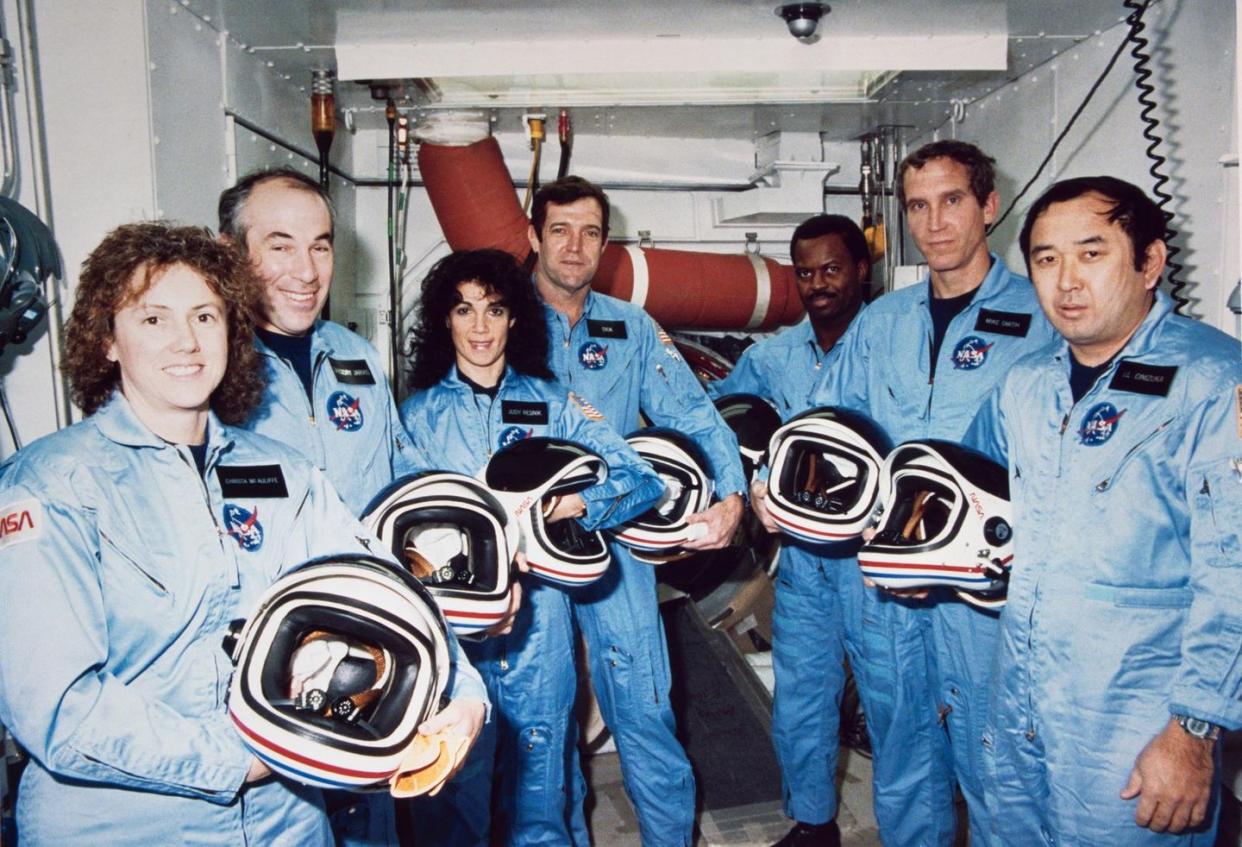Divers Accidentally Found Space Shuttle Challenger Debris in the Bermuda Triangle

A History Channel crew looking for old war wreckage in the Bermuda Triangle made an unexpected discovery: remnants from the space shuttle Challenger.
NASA officials confirmed the red and white tiles divers came from the spacecraft, which exploded upon takeoff on January 28, 1986.
The discovery brings back memories of the lost crew of seven, and reinforces NASA’s commitment to modern safety policies.
An excited nation watched with hope—that quickly turned to shock—as the space shuttle Challenger exploded just 73 seconds into its ascent on January 28, 1986. Unbeknownst to NASA engineers and the flight crew at the time, there was a fatal flaw in the solid rocket booster, which led to the disaster. All seven crew members were killed, including Christa McAuliffe, who would have become the first teacher in space.
🚀 Science is out of this world. We’ll bring it down to Earth for you—join Pop Mech Pro.
Now, a TV documentary crew from the History Channel has unexpectedly uncovered a large segment of the shuttle in the Atlantic Ocean, where it scattered debris 36 years ago.
The crew was looking for the wreckage of a World War II-era aircraft in the Bermuda Triangle in March 2022 when it came across the shuttle wreckage on the seafloor off Florida’s east coast. In particular, they saw 8-inch square tiles on a clearly human-made construction. On Thursday evening, the History Channel released video footage of two divers examining red and white tiles partially buried in sand. Some appear to have darker pockmarks.
“What do you think this is?” one of the divers asks the other in the video segment. “I’ve never seen this on an aircraft before.”
The location and appearance of the debris led the crew to contact NASA and embark on a second dive to study the wreckage. NASA officials who watched the diving footage confirmed it depicts an artifact from Challenger.
An investigation in the months that followed the tragedy found that a cold front prior to the launch from Cape Canaveral, Florida, had formed ice crystals on the shuttle. The freezing temperatures weakened the spacecraft’s rubber O-ring seals, allowing hot gas to escape within the segment joints of the solid rocket booster. At the time, some shuttle program employees raised concerns, but managers cleared the mission for launch the next morning.

“While it has been nearly 37 years since seven daring and brave explorers lost their lives aboard Challenger, this tragedy will forever be seared in the collective memory of our country. For millions around the globe, myself included, Jan. 28, 1986, still feels like yesterday,” NASA Administrator Bill Nelson says in a news release. “This discovery gives us an opportunity to pause once again, to uplift the legacies of the seven pioneers we lost, and to reflect on how this tragedy changed us. At NASA, the core value of safety is—and must forever remain—our top priority, especially as our missions explore more of the cosmos than ever before.”

It wasn’t the last catastrophe of this magnitude for the space program. In 2003, Space Shuttle Columbia broke apart during reentry, killing seven astronauts. The cause was a piece of loose insulating foam from the shuttle’s external propellant tank. The piece collided with the shuttle’s left wing soon after liftoff and damaged protective tiles. Since then, NASA has reevaluated its risk assessment procedures. Now the agency has an Office of Safety and Mission Assurance and “an environment in which everyone can raise safety concerns,” according to the agency. NASA also created the Apollo Challenger Columbia Lessons Learned Program to share these lessons within the agency and with other government, public, commercial, and international audiences.
You Might Also Like
